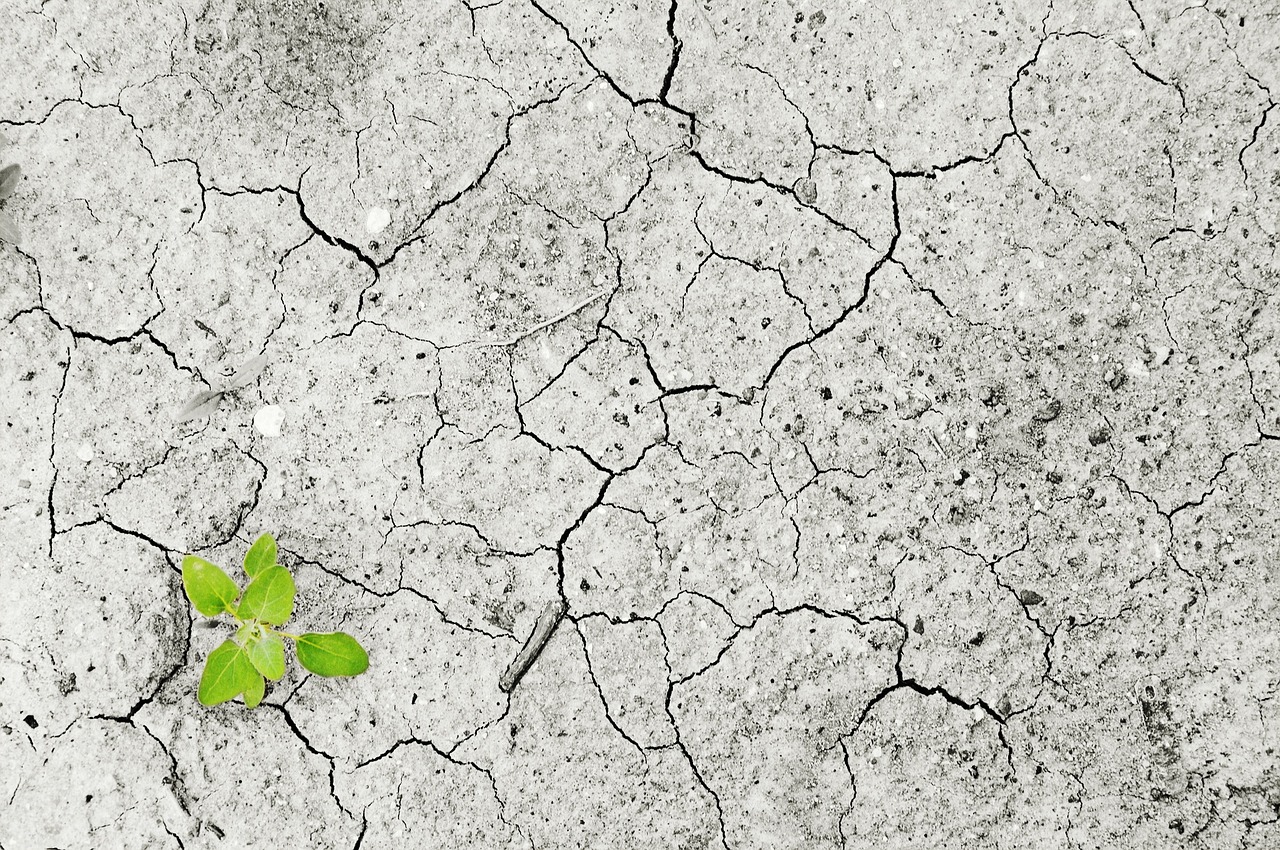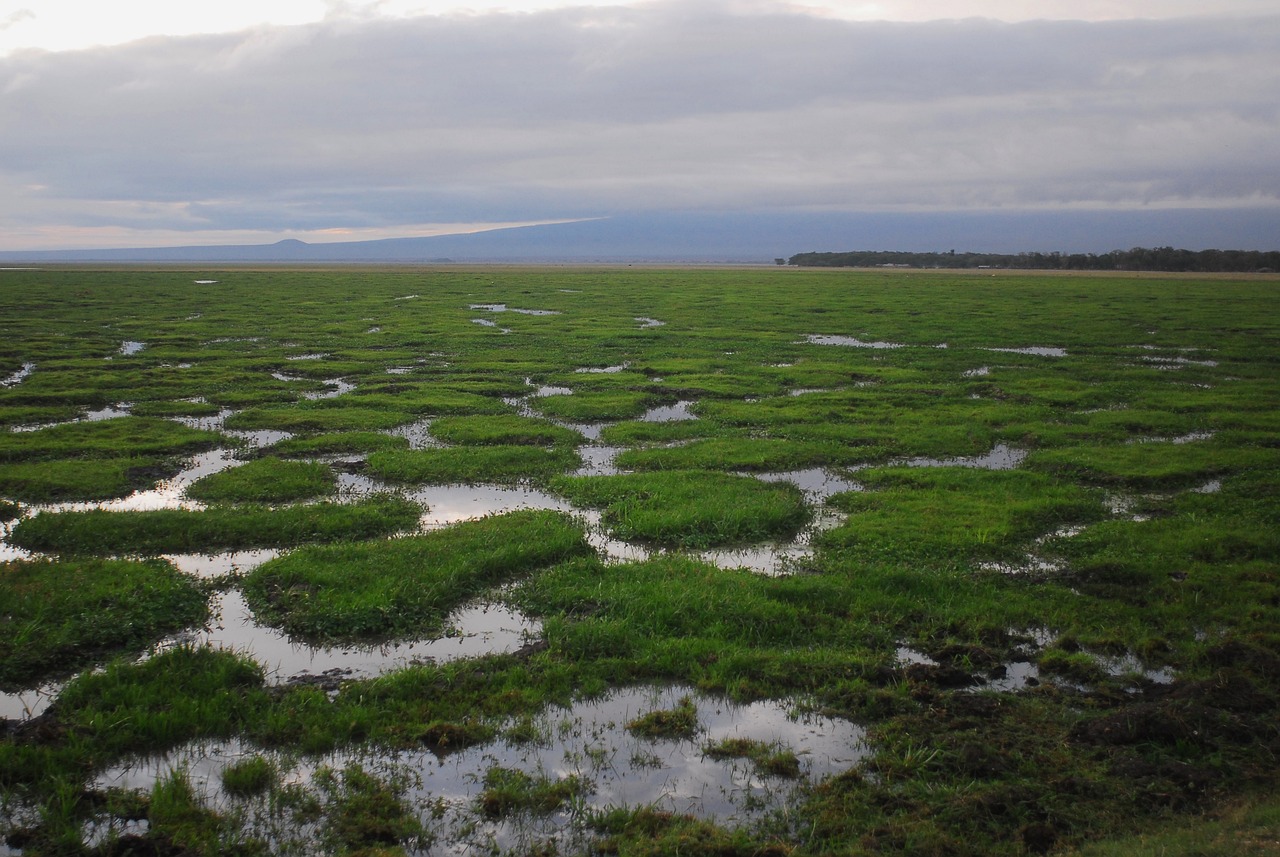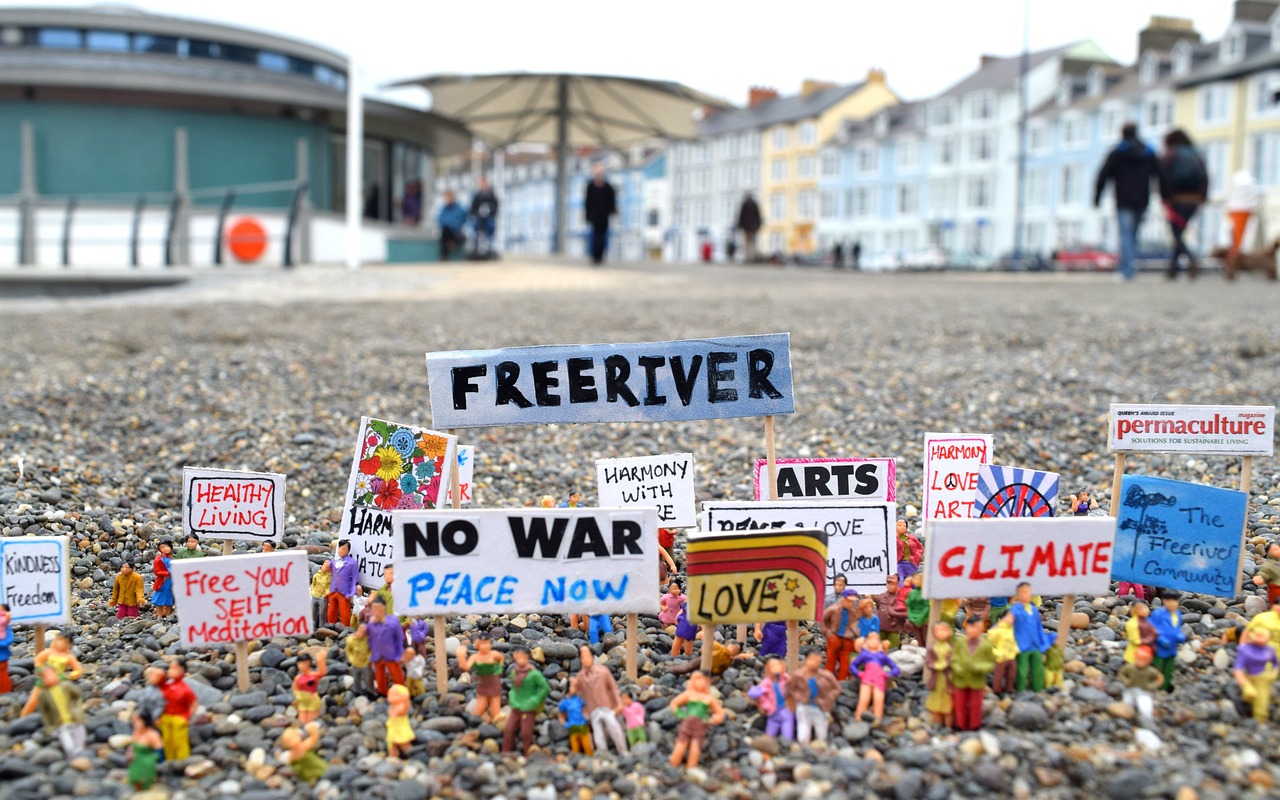Climate Change and Public Health: What's the Connection?
The relationship between climate change and public health is both intricate and alarming. As our planet warms, the impacts of climate change are becoming increasingly evident, not just in the environment but in our health. Imagine a world where the air we breathe is laden with pollutants, where diseases once confined to tropical regions are making their way into our neighborhoods, and where extreme weather events disrupt our lives and threaten our well-being. This is the reality we face today, and understanding the connection between climate change and health is crucial for our survival.
Climate change acts like a domino effect, triggering a series of environmental changes that can lead to serious health issues. For instance, as temperatures rise, we see a direct correlation with poor air quality. Increased heat can exacerbate the formation of ground-level ozone, a harmful pollutant that can lead to respiratory diseases and other health complications. Furthermore, the changing climate affects the habitats of various disease-carrying vectors, leading to the spread of illnesses such as malaria and dengue fever. This is not just a distant threat; it is happening now, and it requires immediate action.
Moreover, extreme weather events, including hurricanes, floods, and heatwaves, pose significant health risks. These events can lead to injuries, mental health issues, and the spread of infectious diseases. Vulnerable populations, such as the elderly, children, and those with pre-existing health conditions, are particularly at risk. As we dive deeper into this topic, we will explore the various ways climate change impacts public health, the mechanisms behind these changes, and the strategies we can adopt to mitigate these effects.
In summary, the connection between climate change and public health is undeniable and multifaceted. It is essential for us to understand these links and take proactive steps to protect our health and the health of future generations. The challenges are significant, but with awareness and action, we can work towards a healthier, more resilient world.
- How does climate change affect air quality? Climate change can increase temperatures, which in turn can lead to higher levels of ground-level ozone and other pollutants, negatively impacting respiratory health.
- What are vector-borne diseases? These are diseases transmitted by vectors like mosquitoes and ticks. Climate change can alter their habitats and increase their populations, leading to a rise in diseases such as malaria and dengue fever.
- Who is most vulnerable to heat-related illnesses? Vulnerable populations include the elderly, young children, and individuals with pre-existing health conditions, who may struggle to cope with extreme heat.
- What can we do to mitigate these health risks? Strategies include improving public awareness, enhancing community infrastructure, and implementing health interventions focused on at-risk populations.

The Impact of Air Quality on Health
Air pollution is not just a buzzword; it's a looming crisis that affects our very existence. With climate change altering weather patterns and increasing industrial emissions, the quality of the air we breathe is deteriorating at an alarming rate. This decline in air quality has profound implications for public health, particularly for those with pre-existing respiratory conditions. When we inhale polluted air, it's like inviting a host of health problems into our bodies. From asthma to chronic obstructive pulmonary disease (COPD), the consequences are severe and far-reaching.
To truly grasp the impact of air quality on health, let’s break it down. Poor air quality can lead to a myriad of health issues, including:
- Respiratory Diseases: Pollutants like particulate matter (PM2.5), nitrogen dioxide (NO2), and sulfur dioxide (SO2) can trigger asthma attacks and worsen chronic respiratory diseases.
- Cardiovascular Problems: Studies have shown that long-term exposure to air pollution increases the risk of heart attacks and strokes.
- Neurological Effects: Emerging research suggests a link between air pollution and cognitive decline, particularly in older adults.
But it’s not just individuals who suffer; entire communities bear the brunt of poor air quality. Vulnerable populations, including children and the elderly, are at a heightened risk. Children, with their developing lungs, are particularly susceptible to the harmful effects of air pollution. Imagine a child, full of energy, unable to play outside due to the smog that blankets their neighborhood. It’s a heartbreaking reality for many.
Moreover, the economic burden of poor air quality is staggering. Healthcare costs skyrocket as more people seek treatment for pollution-related illnesses. The World Health Organization (WHO) estimates that air pollution costs the global economy over $5 trillion annually in welfare costs. This financial strain can cripple public health systems and divert funds from other essential services.
In response to this crisis, it is crucial to implement effective strategies to improve air quality. Governments and organizations worldwide are taking steps to combat air pollution through:
- Regulatory Measures: Enforcing stricter emissions standards for industries and vehicles.
- Public Awareness Campaigns: Educating communities about the sources and effects of air pollution.
- Green Initiatives: Promoting the use of renewable energy sources and encouraging urban green spaces to absorb pollutants.
Ultimately, improving air quality is not just about environmental protection; it's about safeguarding our health and well-being. Everyone has a role to play in this fight, from policymakers to individuals. By making conscious choices—like using public transport, reducing energy consumption, and advocating for cleaner air—we can all contribute to a healthier planet.
Q: How does air pollution affect children specifically?
A: Children are more vulnerable to air pollution because their lungs are still developing. Exposure can lead to developmental issues, respiratory problems, and even long-term health consequences.
Q: What can individuals do to reduce air pollution?
A: Individuals can reduce air pollution by using public transportation, carpooling, reducing energy consumption at home, and supporting clean air initiatives in their community.
Q: Are there any immediate health effects of air pollution?
A: Yes, immediate health effects can include irritation of the eyes, nose, and throat, as well as shortness of breath and exacerbation of asthma symptoms.

Vector-Borne Diseases and Climate Change
As the world warms and weather patterns shift, the delicate balance of ecosystems is disrupted, leading to a significant rise in vector-borne diseases. These diseases, transmitted by organisms such as mosquitoes, ticks, and fleas, are not just a nuisance—they pose serious health threats to millions globally. With climate change acting as a catalyst, we’re witnessing a transformation in how and where these vectors thrive, ultimately affecting public health.
To understand the connection between climate change and vector-borne diseases, we must first recognize the factors that influence the distribution and behavior of these vectors. Rising temperatures create a more hospitable environment for many disease-carrying organisms. For instance, mosquitoes thrive in warmer climates, and as temperatures increase, their breeding cycles accelerate. This means that regions previously considered safe from diseases like malaria and dengue fever are now at risk. The World Health Organization estimates that climate change could increase the number of people at risk for malaria by an additional 60 million by 2030.
Furthermore, changes in precipitation patterns can lead to standing water, which serves as a breeding ground for mosquitoes. Flooding and heavy rainfall can create ideal conditions for vector populations to grow, while droughts can also influence their habitats, pushing them into new areas. This shift not only increases the incidence of diseases but also complicates public health responses. For example, the emergence of the Zika virus in the Americas highlighted how quickly and unexpectedly vector-borne diseases can spread when environmental conditions change.
To fully grasp the implications of climate change on vector-borne diseases, it's crucial to delve into the biology and behavior of the vectors themselves. Many vectors have specific temperature and humidity requirements for optimal survival and reproduction. As these environmental conditions fluctuate due to climate change, we see alterations in their life cycles and habitats. For instance, warmer temperatures can shorten the incubation period of pathogens within vectors, leading to increased transmission rates. Additionally, as vectors migrate to new areas, they can introduce diseases to populations that lack immunity, creating potential outbreaks.
Consider the example of Lyme disease, which has seen a dramatic increase in cases in the northeastern United States. Warmer winters allow ticks to survive longer and expand their range, leading to more encounters with humans. Similarly, the resurgence of West Nile virus in North America correlates with rising temperatures and changes in rainfall patterns that favor mosquito breeding. These case studies serve as stark reminders of how interconnected our health is with the environment.
To combat the rising threat of vector-borne diseases, public health officials are focusing on several preventive strategies. These include:
- Enhancing surveillance systems to monitor vector populations and disease outbreaks.
- Implementing community education programs to raise awareness about prevention methods, such as using insect repellent and eliminating standing water.
- Investing in research to develop vaccines and effective treatments for emerging diseases.
By fostering community awareness and encouraging proactive measures, we can mitigate the impact of climate change on vector-borne diseases and protect public health.

Understanding Vector Dynamics
When we talk about vector-borne diseases, we're diving into a world where tiny organisms can have a massive impact on public health. Vectors, such as mosquitoes and ticks, are not just pesky nuisances; they are the carriers of pathogens that can lead to serious illnesses like malaria, dengue fever, and Lyme disease. But what exactly influences the behavior and distribution of these vectors? The answer lies in understanding their dynamics, which are intricately tied to environmental changes driven by climate change.
As temperatures rise and rainfall patterns shift, the habitats of these vectors are altered significantly. For instance, warmer climates can expand the geographical range of mosquitoes, allowing them to thrive in regions that were previously too cold for their survival. This means that diseases that were once confined to tropical areas are creeping into temperate zones, putting more populations at risk. The biological and ecological factors that govern vector behavior are crucial in predicting and controlling outbreaks.
One fascinating aspect of vector dynamics is the life cycle of these organisms. Many vectors have complex life cycles that include various stages, such as eggs, larvae, and adults. Climate change can disrupt these stages in several ways:
- Temperature Fluctuations: Higher temperatures can accelerate the developmental stages of vectors, leading to more rapid population growth.
- Water Availability: Changes in precipitation can create ideal breeding grounds for mosquitoes, increasing their numbers.
- Habitat Alteration: Urbanization and deforestation can push vectors into closer contact with human populations, heightening the risk of disease transmission.
To illustrate this connection, consider the case of the Aedes aegypti mosquito, the primary vector for dengue fever. Research has shown that as global temperatures rise, the reproduction rate of this mosquito increases, leading to more frequent outbreaks of dengue in regions previously unaffected by the disease. This is a classic example of how a changing climate can lead to unforeseen public health challenges.
Moreover, understanding vector dynamics is not just about recognizing the problem; it also involves developing effective intervention strategies. Public health officials must stay ahead of the curve by monitoring vector populations and implementing control measures before diseases can spread. This can include:
- Conducting regular surveillance of vector populations.
- Educating communities about preventive measures, such as using insect repellent and eliminating standing water.
- Investing in research to develop vaccines and treatments for diseases associated with these vectors.
In conclusion, the dynamics of vectors are a crucial piece of the puzzle when it comes to understanding how climate change impacts public health. By grasping the intricate relationships between environmental factors and vector behavior, we can better prepare for and mitigate the health risks posed by emerging infectious diseases. The more we learn, the more equipped we become to protect ourselves and our communities from the looming threats of vector-borne illnesses.
Q: What are vector-borne diseases?
A: Vector-borne diseases are illnesses caused by pathogens transmitted through vectors, such as mosquitoes, ticks, and fleas. Examples include malaria, dengue fever, and Lyme disease.
Q: How does climate change affect vector populations?
A: Climate change influences vector populations by altering their habitats, life cycles, and breeding patterns, leading to increased risks of disease transmission.
Q: What can be done to control vector populations?
A: Control measures include public education, regular surveillance, and the use of insecticides, as well as promoting environmental management practices to reduce breeding sites.

Case Studies of Emerging Diseases
The relationship between climate change and the emergence of new infectious diseases is becoming increasingly evident. As we witness the planet's temperature rise and weather patterns shift, various regions have reported outbreaks of diseases that were once confined to specific geographical areas. For instance, the spread of Lyme disease has surged in North America, particularly in the northeastern United States. Warmer temperatures have expanded the habitat of the black-legged tick, the primary vector for this disease. As these ticks migrate to new areas, they bring with them the potential for Lyme disease to affect populations that were previously unexposed.
Another striking example is the resurgence of Dengue fever in many tropical and subtropical regions. Historically, dengue was confined to certain areas; however, changing rainfall patterns and increased temperatures have created ideal breeding conditions for the Aedes aegypti mosquito, the primary vector for the virus. Countries like Brazil and India have recorded alarming spikes in dengue cases, leading to public health emergencies. The World Health Organization has noted that climate change is a significant factor in the rising incidence of this disease, as it alters mosquito breeding sites and extends their active seasons.
Moreover, malaria is another disease that has shown a concerning trend in its geographic spread. Research indicates that as temperatures rise, malaria-carrying mosquitoes are migrating to higher altitudes and latitudes, areas that were once too cold for their survival. For instance, in the highlands of East Africa, malaria cases have been reported in regions that had been malaria-free for decades. This shift not only poses a threat to public health but also complicates existing malaria control measures, which were tailored to specific environmental conditions.
To illustrate these points further, we can look at a table summarizing key emerging diseases influenced by climate change:
| Disease | Vector/Pathogen | Geographical Spread | Climate Factor |
|---|---|---|---|
| Lyme Disease | Black-legged tick | Northeastern USA | Warmer temperatures |
| Dengue Fever | Aedes aegypti mosquito | Brazil, India | Changing rainfall patterns |
| Malaria | Anopheles mosquito | East African highlands | Rising temperatures |
These case studies reveal a critical truth: as our climate continues to change, the dynamics of infectious diseases are evolving. Public health officials must adapt their strategies to address these emerging threats. This includes enhancing surveillance systems, developing targeted interventions, and promoting community awareness to mitigate the risks associated with these diseases. Understanding the interplay between climate and health is not just an academic exercise; it is a necessity for safeguarding public health in an era of unprecedented environmental change.
- What are vector-borne diseases? Vector-borne diseases are illnesses caused by pathogens and parasites transmitted by vectors such as mosquitoes, ticks, and fleas.
- How does climate change affect the spread of diseases? Climate change affects temperature and precipitation patterns, which can expand the habitats of disease-carrying vectors, leading to increased transmission of diseases.
- What can be done to prevent the spread of emerging diseases? Preventive measures include improving public health infrastructure, increasing community awareness, and implementing effective vector control strategies.

Preventive Strategies
As the climate crisis continues to unfold, the urgency for effective to combat vector-borne diseases has never been more critical. Communities must adopt a multi-faceted approach to mitigate the impact of climate change on public health. One of the most effective ways to achieve this is through targeted public health interventions that focus on both education and action. For instance, increasing awareness about the risks associated with vector-borne diseases can empower individuals to take proactive measures in their daily lives.
Moreover, community engagement plays a pivotal role in these preventive strategies. By fostering collaboration among local health departments, environmental agencies, and community organizations, we can create a robust framework for disease prevention. This collaboration can manifest in various ways, such as organizing community clean-up days to eliminate standing water, which serves as breeding grounds for mosquitoes. Additionally, public health campaigns can educate residents on how to protect themselves, such as using insect repellent and wearing appropriate clothing during peak mosquito activity times.
Another essential strategy involves monitoring and surveillance of vector populations and disease outbreaks. By tracking changes in the distribution of disease-carrying vectors, health officials can respond swiftly to emerging threats. For example, implementing early warning systems can alert communities to potential outbreaks, allowing for timely interventions. This proactive approach not only saves lives but also reduces the economic burden on healthcare systems.
Furthermore, investing in research and development for new technologies can enhance our ability to combat vector-borne diseases. Innovations such as genetically modified organisms (GMOs) designed to reduce vector populations or vaccines targeting specific diseases can be game-changers in public health. As we navigate the complexities of climate change, it is imperative to support scientific advancements that can provide us with the tools needed to protect vulnerable populations.
To summarize, the preventive strategies against the health impacts of climate change and vector-borne diseases must include:
- Community Engagement: Encourage local participation in prevention efforts.
- Public Health Education: Raise awareness about vector-borne diseases and prevention methods.
- Monitoring and Surveillance: Implement systems to track vector populations and disease outbreaks.
- Research and Development: Invest in innovative technologies to combat disease spread.
By adopting these strategies, we can create a healthier future for our communities, ensuring that we are better prepared to face the challenges posed by climate change and its impact on public health.
Q: How does climate change affect vector-borne diseases?
A: Climate change alters the habitats and life cycles of vectors, such as mosquitoes and ticks, leading to changes in the distribution of diseases like malaria and dengue fever.
Q: What are some common vector-borne diseases?
A: Common vector-borne diseases include malaria, dengue fever, Zika virus, and Lyme disease, all of which can have serious health impacts.
Q: How can individuals protect themselves from vector-borne diseases?
A: Individuals can protect themselves by using insect repellent, wearing long sleeves and pants, eliminating standing water around their homes, and staying informed about outbreaks in their area.
Q: Why is community engagement important in preventing vector-borne diseases?
A: Community engagement is crucial because it fosters collaboration, raises awareness, and encourages collective action to mitigate risks associated with vector-borne diseases.

Extreme Weather Events and Health Risks
Extreme weather events, such as hurricanes, floods, and heatwaves, are becoming more frequent and intense due to climate change. These events not only wreak havoc on our environment but also pose significant health risks to communities around the globe. Imagine a hurricane making landfall, with winds so strong they can uproot trees and destroy homes. The aftermath is not just about physical destruction; it brings about a wave of health challenges that can linger long after the storm has passed.
When we think about the immediate impacts of extreme weather, injuries and fatalities often come to mind. However, the health risks extend far beyond the initial chaos. For instance, flooding can lead to waterborne diseases, as contaminated water sources become breeding grounds for pathogens. Additionally, the disruption of healthcare services during such events can exacerbate existing health conditions for vulnerable populations. The connection between extreme weather and mental health is equally concerning; the stress and trauma associated with these disasters can lead to long-term psychological issues, including anxiety and depression.
Moreover, the rise in temperature during heatwaves can trigger a range of heat-related illnesses, such as heat exhaustion and heat stroke. These conditions are particularly dangerous for individuals with pre-existing health issues, the elderly, and young children. As global temperatures continue to rise, the frequency and severity of these heatwaves are expected to escalate, making it imperative for communities to prepare and adapt.
To better understand the health risks associated with extreme weather events, let’s look at some key statistics:
| Extreme Weather Event | Health Risks |
|---|---|
| Hurricanes | Injuries, fatalities, mental health issues, waterborne diseases |
| Floods | Injuries, waterborne diseases, displacement-related health issues |
| Heatwaves | Heat exhaustion, heat stroke, exacerbation of chronic illnesses |
So, what can be done to mitigate these health risks? Community preparedness is key. Local governments and health organizations must develop robust emergency response plans that include health services and psychological support for affected populations. Public awareness campaigns can educate individuals on how to protect themselves during extreme weather events, emphasizing the importance of staying informed and having an emergency kit ready.
In conclusion, the connection between extreme weather events and health risks is undeniable. As climate change continues to influence the frequency and intensity of these events, it is crucial for communities to adapt and prepare. By understanding the risks and implementing effective strategies, we can protect public health and ensure a more resilient future.
- What are some common health risks associated with extreme weather events?
Common health risks include injuries, waterborne diseases, heat-related illnesses, and mental health issues. - How can communities prepare for extreme weather events?
Communities can prepare by developing emergency response plans, conducting public awareness campaigns, and ensuring healthcare services are accessible during disasters. - Who is most vulnerable to the health impacts of extreme weather?
Vulnerable populations include the elderly, children, and individuals with pre-existing health conditions.

Heat-Related Illnesses
As global temperatures continue to rise, the prevalence of is becoming a pressing public health concern. These illnesses range from mild conditions, such as heat exhaustion, to severe and life-threatening situations like heat stroke. The connection between climate change and health is becoming clearer, as increased temperatures and prolonged heat waves create environments that are ripe for these health issues to flourish. But what exactly are these heat-related illnesses, and how do they impact our lives?
Heat exhaustion occurs when the body loses an excessive amount of water and salt, often due to sweating. Symptoms can include heavy sweating, weakness, cold and pale skin, fast or weak pulse, and nausea. If left untreated, heat exhaustion can progress to heat stroke, which is a medical emergency. Heat stroke occurs when the body temperature rises to 104°F (40°C) or higher, leading to confusion, seizures, and even loss of consciousness. It’s crucial to recognize these symptoms early, as timely intervention can be lifesaving.
But who is most at risk? Certain groups are particularly vulnerable to heat-related illnesses. The elderly, for example, often have a diminished ability to regulate their body temperature. Children, too, are at risk, as they may not recognize the signs of overheating. Additionally, individuals with pre-existing health conditions, such as cardiovascular diseases, are more susceptible to the adverse effects of extreme heat. These populations require targeted interventions to ensure their safety during heat waves.
To illustrate the seriousness of this issue, let’s take a look at some statistics:
| Group | Risk Level | Common Heat-Related Illnesses |
|---|---|---|
| Elderly | High | Heat exhaustion, Heat stroke |
| Children | Moderate | Heat cramps, Heat exhaustion |
| Individuals with Pre-existing Conditions | High | Heat exhaustion, Exacerbation of existing conditions |
Addressing the risks associated with heat-related illnesses requires a multi-faceted approach. Community-level initiatives can play a significant role in mitigating these health risks. Public awareness campaigns can educate individuals about the dangers of extreme heat and the importance of staying hydrated. Furthermore, improving infrastructure, such as creating more shaded areas and ensuring access to air conditioning in public buildings, can provide relief during heat waves.
In addition, local governments can implement early warning systems that alert residents of impending heat waves, allowing them to take necessary precautions. By fostering a community that prioritizes health and safety, we can reduce the incidence of heat-related illnesses and protect our most vulnerable populations. So, the next time you hear about a heat wave, remember that it’s not just about the temperature; it’s about the lives that are at stake.
- What are the symptoms of heat exhaustion? Symptoms include heavy sweating, weakness, cold and pale skin, fast or weak pulse, and nausea.
- Who is most at risk for heat-related illnesses? The elderly, children, and individuals with pre-existing health conditions are particularly vulnerable.
- How can I protect myself during a heat wave? Stay hydrated, avoid strenuous activities during peak heat, and seek shade or air conditioning when possible.

Vulnerable Populations
When we talk about climate change and its health implications, it's crucial to highlight the who bear the brunt of its impacts. These groups often have limited resources and face higher risks of heat-related illnesses and other health issues exacerbated by climate change. Think of them as the canaries in the coal mine; their struggles often signal broader public health crises that may affect us all.
Among the most affected are the elderly. As we age, our bodies become less efficient at regulating temperature, making older adults particularly susceptible to heat stress and heat-related illnesses. This population often has multiple health conditions, which can complicate their response to extreme weather. For instance, a senior citizen with heart disease may find it particularly challenging to cope with a sudden heatwave, leading to increased hospital visits and even mortality.
Children, too, are at a higher risk. Their bodies are still developing, and they can experience heat-related illnesses more quickly than adults. Schools often lack adequate cooling systems, exposing children to extreme temperatures during the day. Imagine a child playing outside during a scorching summer day; their little bodies are working overtime just to stay cool. This can lead to dehydration, heat exhaustion, or heatstroke, which are serious health concerns.
Additionally, people with pre-existing health conditions or disabilities face unique challenges. Conditions like asthma or diabetes can worsen in extreme heat, and individuals with mobility issues may struggle to access cooling centers or receive necessary medical care during heatwaves. It's a vicious cycle that highlights the need for targeted interventions.
To put this into perspective, let's look at a table that summarizes the vulnerable groups and their specific risks:
| Vulnerable Group | Specific Risks |
|---|---|
| Elderly | Heat stress, exacerbation of chronic conditions |
| Children | Dehydration, heat exhaustion, heatstroke |
| People with Disabilities | Limited access to cooling, increased health complications |
| Low-Income Communities | Inability to afford air conditioning or transportation to cooling centers |
Moreover, low-income communities often lack the resources to cope with extreme weather. Imagine a family living in an area where air conditioning is a luxury rather than a necessity. During a heatwave, they may find themselves trapped in their homes, unable to escape the sweltering heat. This situation not only affects their physical health but also takes a toll on their mental well-being.
As we navigate these challenges, it’s essential to focus on community awareness and targeted public health interventions. Initiatives like public awareness campaigns can educate vulnerable populations about the risks of heat and how to mitigate them. For example, local governments can provide resources for families to create cooling plans during extreme heat events. By empowering these communities, we can help them build resilience against the adverse effects of climate change.
In conclusion, addressing the needs of vulnerable populations is not just a matter of social justice; it is a public health imperative. By understanding who is most at risk and implementing effective strategies, we can work towards a healthier future for everyone.
- What are the health risks associated with climate change? Climate change can lead to various health issues, including respiratory diseases, heat-related illnesses, and the spread of vector-borne diseases.
- Who are considered vulnerable populations? Vulnerable populations include the elderly, children, people with pre-existing health conditions, and low-income communities.
- How can communities help vulnerable populations? Communities can implement public awareness campaigns, provide resources for cooling during heat waves, and improve access to healthcare services.
- What can individuals do to protect themselves from heat-related illnesses? Stay hydrated, avoid strenuous activities during peak heat hours, and seek out cool environments whenever possible.

Mitigation and Adaptation Strategies
As we grapple with the escalating challenges posed by climate change, it becomes increasingly crucial to implement effective mitigation and adaptation strategies that can shield our communities from its adverse health impacts. These strategies don’t just serve as a band-aid; they are essential for fostering resilience and ensuring that we can thrive in a changing environment. A multifaceted approach is necessary, combining community engagement, policy reforms, and infrastructural improvements.
One of the most effective ways to mitigate the health risks associated with climate change is through public awareness campaigns. Educating the community about the dangers of extreme heat, for instance, can empower individuals to take proactive measures. These campaigns can include information on recognizing heat-related illnesses, tips for staying cool, and the importance of hydration. Imagine a neighborhood where everyone is informed and prepared—this collective knowledge can save lives.
Moreover, enhancing our infrastructure is vital. Urban areas, in particular, can benefit from green spaces that reduce heat and improve air quality. Cities can implement strategies such as:
- Planting more trees to provide shade
- Creating green roofs that lower building temperatures
- Developing community gardens that promote social interaction and provide fresh produce
These initiatives not only combat heat but also foster community spirit and improve mental health, proving that environmental and social health are intricately linked.
Additionally, local governments can play a pivotal role by adopting policies aimed at reducing greenhouse gas emissions. This could involve investing in renewable energy sources, promoting public transportation, and enforcing stricter regulations on industrial pollutants. When communities commit to cleaner air, they are not just addressing climate change; they are also safeguarding public health.
Another crucial aspect of adaptation involves identifying and supporting vulnerable populations. The elderly, children, and individuals with pre-existing health conditions are at higher risk during heat waves. Tailored interventions, such as establishing cooling centers and providing transportation for those in need, can significantly mitigate risks. For example, a community might set up a network of volunteers to check on elderly neighbors during extreme heat events, ensuring that no one is left to suffer alone.
Finally, ongoing research and monitoring are essential to understand the evolving impacts of climate change on public health. By investing in data collection and analysis, we can better predict health risks and develop targeted responses. For instance, a study might reveal that certain areas are becoming hotspots for heat-related illnesses, prompting immediate action from local health departments.
In summary, the path to a healthier future in the face of climate change is paved with proactive measures that prioritize community engagement, infrastructural improvements, and targeted support for vulnerable populations. By taking these steps, we can create a more resilient society that not only survives but thrives amidst the challenges of a changing climate.
Q: What are some immediate actions I can take to protect myself from heat-related illnesses?
A: Stay hydrated, avoid strenuous activities during peak heat hours, and seek out air-conditioned spaces when possible.
Q: How can local communities get involved in climate change mitigation?
A: Communities can organize awareness campaigns, plant trees, and advocate for local policies that promote sustainability.
Q: Why is it important to focus on vulnerable populations?
A: Vulnerable populations often lack the resources to cope with extreme weather, making them more susceptible to health risks. Targeted interventions can help protect these groups.
Q: How does climate change affect air quality?
A: Climate change can exacerbate air pollution by increasing temperatures and altering weather patterns, leading to more smog and respiratory issues.
Frequently Asked Questions
- How does climate change affect public health?
Climate change impacts public health in various ways, including worsening air quality, increasing the prevalence of vector-borne diseases, and intensifying extreme weather events. These factors contribute to respiratory issues, heat-related illnesses, and the spread of infectious diseases, posing significant challenges to health systems worldwide.
- What are the health risks associated with poor air quality?
Poor air quality can lead to a range of health problems, particularly respiratory diseases such as asthma and chronic obstructive pulmonary disease (COPD). Long-term exposure to pollutants can also increase the risk of heart disease and stroke, making it crucial to address air quality issues exacerbated by climate change.
- How do rising temperatures influence vector-borne diseases?
Rising temperatures and changing rainfall patterns create favorable conditions for disease-carrying vectors like mosquitoes and ticks. This can lead to the expansion of their habitats and life cycles, increasing the risk of diseases such as malaria, dengue fever, and Lyme disease in new areas.
- What are some examples of diseases emerging due to climate change?
Several diseases have emerged or re-emerged as a result of climate change, including Zika virus and West Nile virus. Changes in climate have allowed these diseases to spread to regions where they were previously uncommon, highlighting the need for increased public health vigilance.
- What can be done to control vector populations?
Controlling vector populations involves a combination of public health interventions, such as community awareness campaigns, habitat modification, and the use of insecticides. It’s essential to educate communities about preventive measures to reduce the risk of disease transmission.
- What health risks are associated with extreme weather events?
Extreme weather events can lead to immediate health threats, including injuries, mental health issues, and outbreaks of infectious diseases. Natural disasters often disrupt healthcare services and can exacerbate existing health conditions, making preparedness and response critical.
- Who is most vulnerable to heat-related illnesses?
Vulnerable populations include the elderly, children, individuals with pre-existing health conditions, and those without access to cooling resources. These groups are at a higher risk of heat exhaustion and heat stroke, necessitating targeted interventions to protect their health.
- What strategies can communities implement to mitigate heat-related risks?
Communities can adopt various strategies to mitigate heat-related risks, such as public awareness campaigns about heat safety, improving urban infrastructure to provide shade and cooling areas, and ensuring access to air conditioning for vulnerable populations. These initiatives can significantly reduce health risks during heat waves.



















